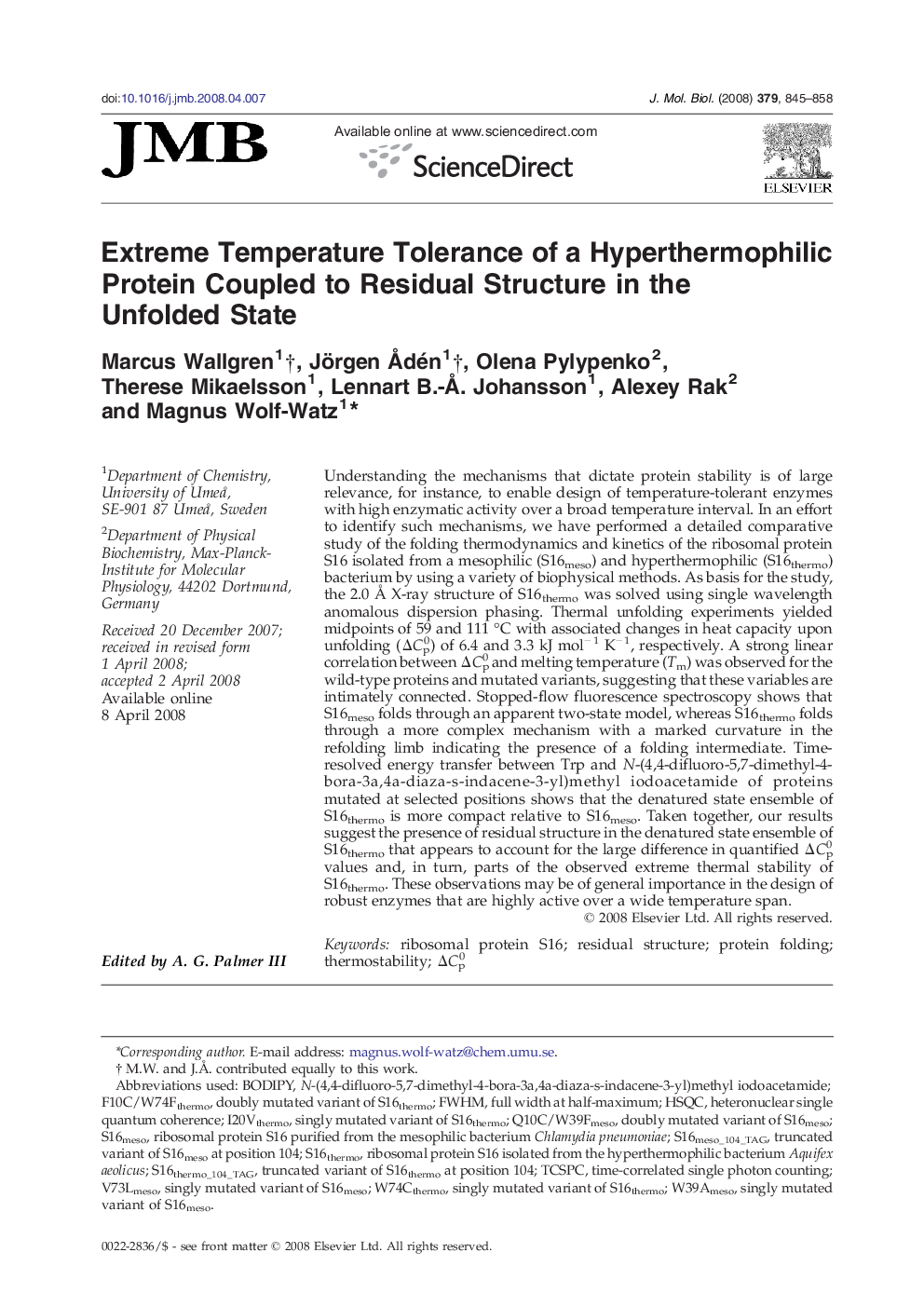| Article ID | Journal | Published Year | Pages | File Type |
|---|---|---|---|---|
| 2187422 | Journal of Molecular Biology | 2008 | 14 Pages |
Understanding the mechanisms that dictate protein stability is of large relevance, for instance, to enable design of temperature-tolerant enzymes with high enzymatic activity over a broad temperature interval. In an effort to identify such mechanisms, we have performed a detailed comparative study of the folding thermodynamics and kinetics of the ribosomal protein S16 isolated from a mesophilic (S16meso) and hyperthermophilic (S16thermo) bacterium by using a variety of biophysical methods. As basis for the study, the 2.0 Å X-ray structure of S16thermo was solved using single wavelength anomalous dispersion phasing. Thermal unfolding experiments yielded midpoints of 59 and 111 °C with associated changes in heat capacity upon unfolding (ΔCp0) of 6.4 and 3.3 kJ mol− 1 K− 1, respectively. A strong linear correlation between ΔCp0 and melting temperature (Tm) was observed for the wild-type proteins and mutated variants, suggesting that these variables are intimately connected. Stopped-flow fluorescence spectroscopy shows that S16meso folds through an apparent two-state model, whereas S16thermo folds through a more complex mechanism with a marked curvature in the refolding limb indicating the presence of a folding intermediate. Time-resolved energy transfer between Trp and N-(4,4-difluoro-5,7-dimethyl-4-bora-3a,4a-diaza-s-indacene-3-yl)methyl iodoacetamide of proteins mutated at selected positions shows that the denatured state ensemble of S16thermo is more compact relative to S16meso. Taken together, our results suggest the presence of residual structure in the denatured state ensemble of S16thermo that appears to account for the large difference in quantified ΔCp0 values and, in turn, parts of the observed extreme thermal stability of S16thermo. These observations may be of general importance in the design of robust enzymes that are highly active over a wide temperature span.
